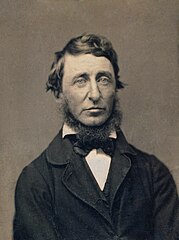Mary O’Hara Alsop (born Cape May Point, New Jersey, 1885; died Chevy Chase, Maryland, October 14, 1980) was a screenwriter, composer, and author. She wrote My Friend Flicka and Wyoming Summer.
Judie Angell (born New York, New York, 1937) writes books for children. Her works include Dear Lola and Don’t Rent My Room!
Mildred Wirt Benson (born Ladora, Iowa, 1905; died Toledo, Ohio, May 28, 2002) wrote many children’s books under a variety of pen names. As Carolyn Keene, she wrote 23 of the 30 Nancy Drew mysteries for the Stratemeyer Syndicate. Under her own name, she wrote the Penny Parker series. Children could visit a website devoted to her at: Mildred Wirt Benson.
Mary McLeod Bethune (born Mayesville, South Carolina, 1875; died Daytona Beach, Florida, May 18, 1955) was born to a family of former slaves. She devoted her life to the improvement of conditions for African Americans. She served as an advisor to Franklin Roosevelt on minority rights. Children could learn more at: Mary McLeod Bethune.
Edmund Clerihew Bentley (born London, England, 1875; died London, England, March 30, 1956) created the clerihew. It is a poem composed of two rhymed couplets of different lengths. Children can read some of his clerihews at: Clerihews. Then they can write some of their own clerihews.
Dianne Ochiltree (born Warren, Ohio, 1953) writes books for children. Her works include Molly, by Golly, and It’s a Firefly Night. Children can visit her website: Dianne Ochiltree.
Martin Provensen (born Chicago, Illinois, 1916; died Staatsburg, New York, March 27, 1987) and his wife, Alice Provensen, wrote and illustrated children’s books. They earned a 1982 Caldecott Honor Award for A Visit to William Blake’s Inn: Poems for Innocent and Experienced Travelers. They also received the 1984 Caldecott Medal for The Glorious Flight: Across the Channel with Louis Bleriot, July 25, 1909.
Candice Ransom (born Washington, DC, 1952) has written at least 150 books for children and young adults. Her works include Rebel McKenzie and Tooth Fairy’s Night. Children could visit her website at: Candice Ransom.

Whistler’s Mother
James Abbott McNeill Whistler (born Lowell, Massachusetts, 1834; died London, England, July 17, 1903) was an artist. One of his best-known works is Arrangement in Grey and Black: Portrait of the Painter’s Mother. The work is commonly called Whistler’s Mother. Children can visit a website at: Whistler.






